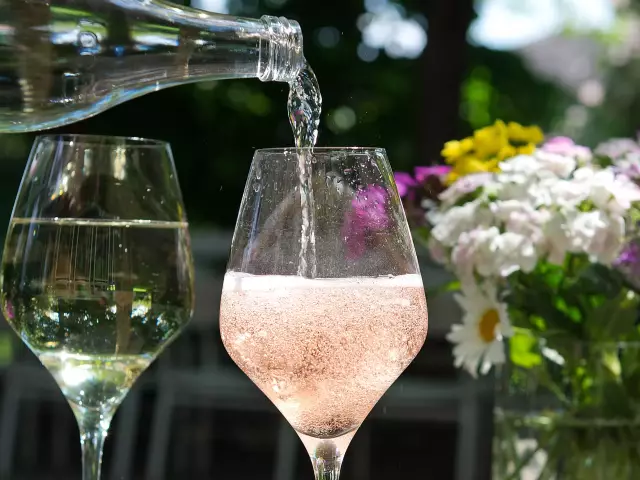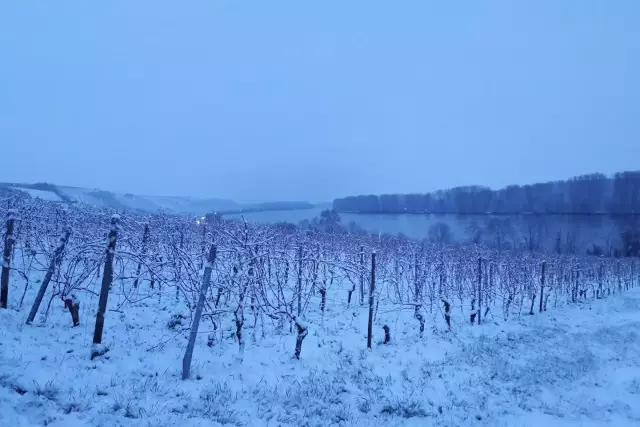Blanc de Noir
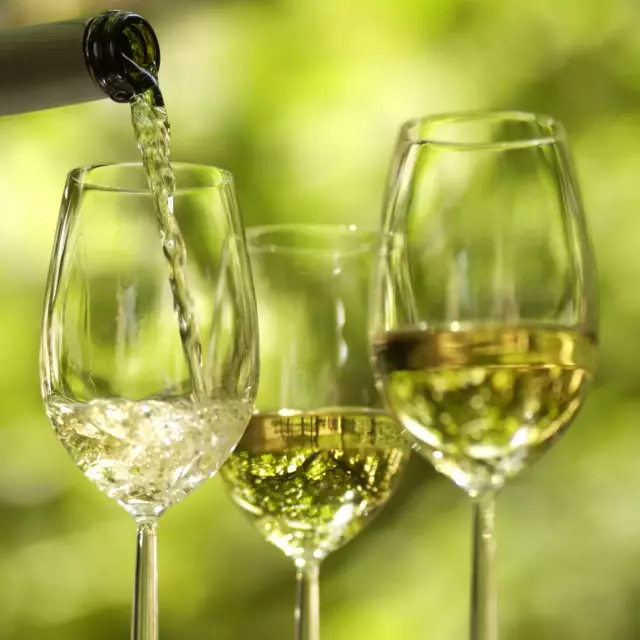
"White from black" - this is the literal translation of "Blanc de Noir" and stands for a white wine made from dark blue to black grapes.
Facts
-
100 %
red grapes
-
2021
was "Blanc de Noir" redefined in terms of wine law
As the name suggests, this form of winemaking has its origins in France, where the red grapes of Pinot Noir (Spätburgunder) and Pinot Meunier (Schwarzriesling) have always been processed into white wines as the basis for champagne.
This is possible because red berries generally have light flesh. The red pigment, the so-called anthocyanins, are mainly present in the berry skins. If the juice from red grapes is to remain white, no colourants from the skins may pass into the must. It is therefore important that the red grapes, which are as healthy as possible, are only pressed gently. The light colored must obtained is then fermented to a white wine. A typical Blanc de Noir has a light color and can sometimes have hints of yellow-gold.
If the cellar master leaves the squeezed red berries in the pressed juice for a little longer - the experts then speak of a longer "maceration time" – this is when a little more color passes from the skins into the must and a rosé develops.
In terms of wine law
After the 10th law amending the Wine Act came into force in January 2021, according to the new Wine Ordinance the designation "Blanc de Noir" or "Blanc de Noirs" may only be used for domestic wine, sparkling wine, quality sparkling wine or semi-sparkling wine if it is a product with a protected designation of origin (PDO) is made from fresh red wine grapes like a white wine and has the typical color of white wine.
Why Blanc de Noir?
The white wines obtained from the red grapes are characterized by their distinctive fruit aromas, pleasant freshness and moderate acidity. They combine the full flavor of a red wine with the fruitiness of a white wine and thus display the characteristics of both types. Blanc de Noirs are excellent food companions that go well with a wide range of dishes.
Flexibility and positive side effects
For winemakers who mainly cultivate red grape varieties, the production of Blanc de Noirs is also an opportunity to react flexibly to the increasing demand for white wine. On the other hand, there is a positive side effect for the production of red wine: if the light-colored must for a Blanc de Noir is removed before the maceration, the ratio of the color and tannin-containing skins to the remaining pressed juice in the mash changes. As a result, winemakers and wine lovers can enjoy more complex and color-intensive red wines.
How is Blanc de Noir defined under wine law in Germany?
According to the Wine Law, the name "Blanc de Noir" or "Blanc de Noirs" may only be used if it is a product with a protected designation of origin (PDO), pressed from fresh red grapes like a white wine and with the color typical of white wine.
Varietals

with white wine Cauliflower soup
with white wine
- 3 Stück Schalotten
- 500 Gramm Blumenkohl
- 20 Gramm Butter
- 1 TL Fenchelsaat
- 50 ml Weißwein
- 800 ml Gemüsebrühe
- 100 ml Schlagsahne
- 1 Prise Zucker
- nach Geschmack Salz & Pfeffer
Peel the shallots and cut into slices.
Clean and chop the cauliflower.
Melt the butter in a pan, sauté the shallots with the fennel seeds over a medium heat for 3 minutes until colourless. Add the cauliflower, sauté for 2 minutes, season with salt and sugar.
<p
<p>Deglaze with white wine, bring to the boil and top up with vegetable stock and whipping cream. Simmer over a low heat for 20 minutes.
Blend with a hand blender, adding stock if necessary to reach the desired consistency.
Serve drizzled with a few drops of olive oil.
- Silvaner (trocken)
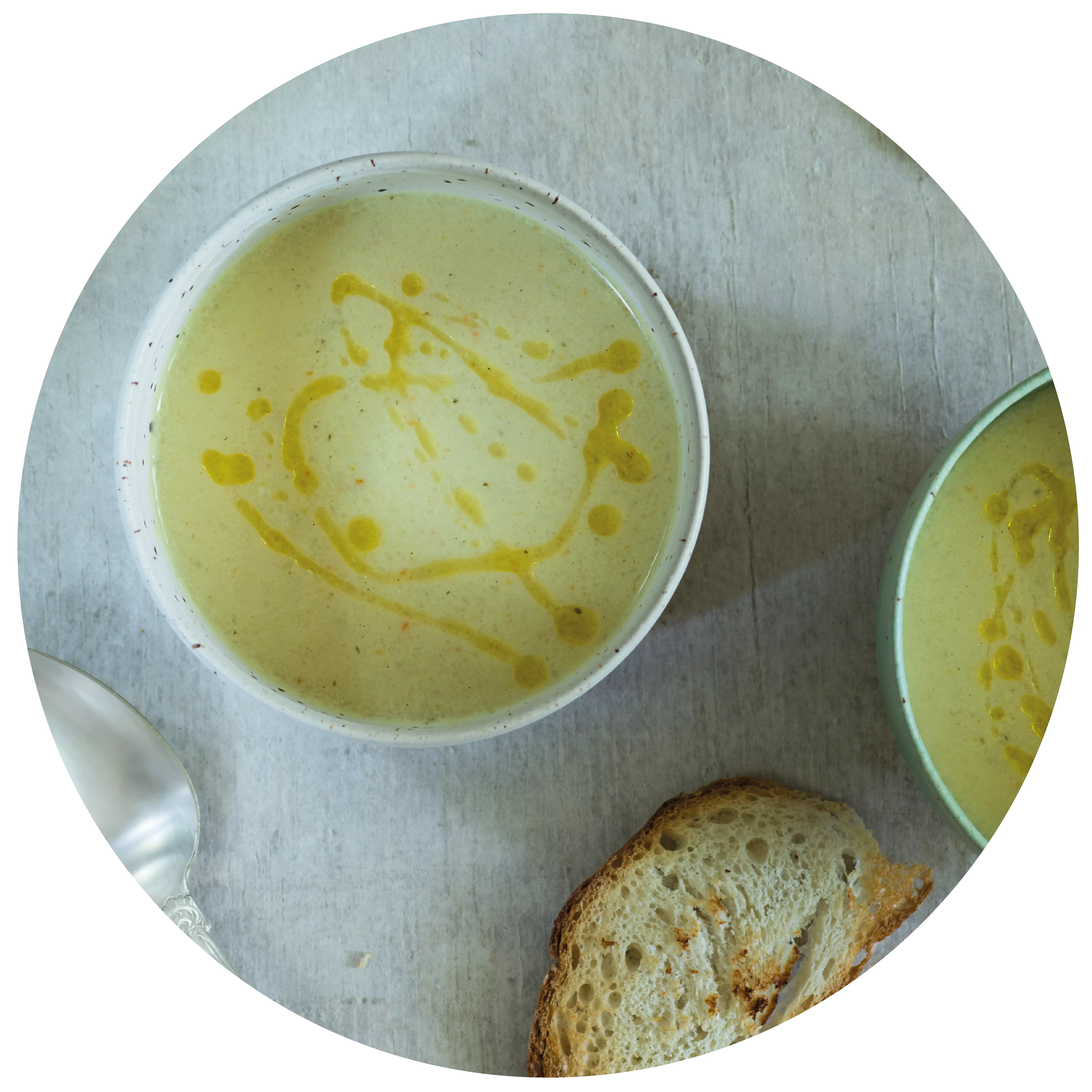
with wild duck breast, porcini mushrooms and glazed chestnuts Herb salad
with wild duck breast, porcini mushrooms and glazed chestnuts
- 150 Gramm Wildkräuter
- 4 EL Olivenöl
- 2 EL Balsamessig
- 8 Stück Wildentenbrüste (a 100g)
- 2 EL Sonnenblumenöl
- 4 EL Honig
- 1 EL Thymian
- 200 Gramm Steinpilze
- 20 gekochte Maronen
- 100 ml Apfelsaft
- 2 El Zucker
- nach Belieben Salz & Pfeffer
Clean, wash and pat dry the wild herbs. Marinate with olive oil and balsamic vinegar and season with salt and pepper.
Preheat the oven to 220°C top and bottom heat. Season the wild duck breasts with salt and pepper, sear on the meat side in a pan with sunflower oil and cook in the preheated oven for about 8 minutes on the skin side. Remove the duck breast, brush the skin side with honey and thyme and roast for another 2 minutes on a high heat until crispy.
Clean the porcini mushrooms and cut into slices. Fry in a pan in oil on both sides, remove and keep warm. Caramelise the sugar in the pan, deglaze with the apple juice and simmer until the caramel has dissolved. Add the chestnuts and add a little more apple juice if necessary.
- Pinot Blanc (trocken)
- Gutedel (trocken)
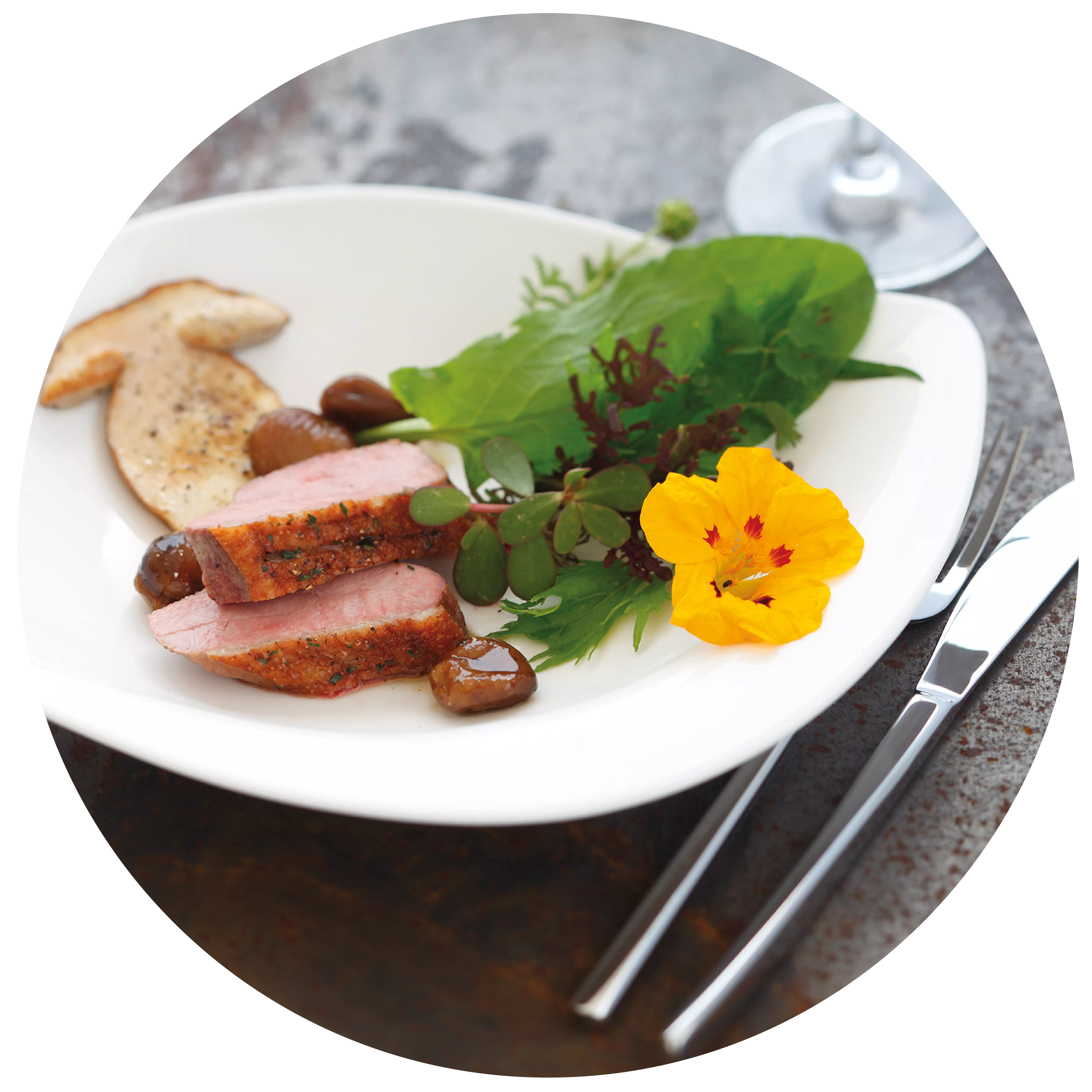
with herb crust Roast turkey
with herb crust
- 600 Gramm Putenbrust am Stücke
- 0,25 Liter Weißwein
- 0,25 Liter Gemüsebrühe
- 4 ganze Tomaten
- 4 Scheiben Toastbrot
- 2 ganze Eier
- 2 Stück Zwiebeln
- 75 Gramm geriebener Emmentaler
- 1 Stange Porree
- 1 Bund Schnittlauch
- 1 EL Olivenöl
- nach Belieben Salz & Pfeffer
Wash the meat, pat dry and cut a deep pocket lengthways. Crumble the toast. Wash and chop the herbs, peel and dice the onions.
<p
<p>Preheat the oven to 200°C (top and bottom heat). Place the bread, herbs, onions, cheese and eggs in a bowl, mix thoroughly and season. Stuff 2/3 of this mixture into the turkey breast. Pin the opening with wooden skewers and tie up crosswise with kitchen twine. Place the roast in a roasting tin and brush with oil.
Roast in the preheated oven for approx. 1 hour. Gradually pour in the white wine and vegetable stock.
<p
<p>Clean and wash the vegetables. Cut the leek into pieces and add to the roast with the whole tomatoes after 30 minutes.
About 20 minutes before the end of the cooking time, spread the remaining third of the herb mixture over the roast and finish cooking.
Arrange on plates with the vegetables and serve. Serve with rice.
- Pinot Gris (trocken)
- Chardonnay (trocken)
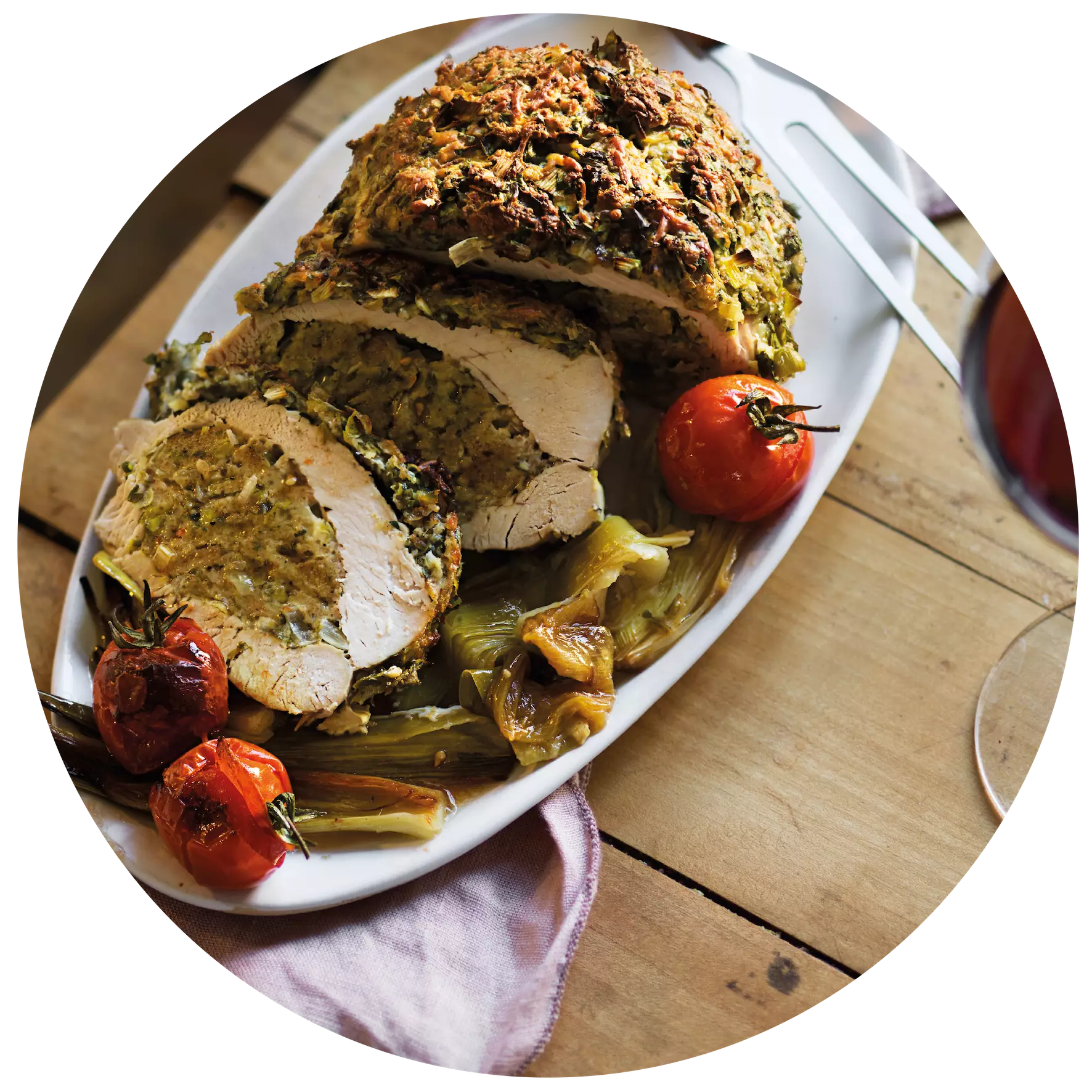
in a bacon coating Lamb
in a bacon coating
- 4 Stück Lammlachse à 150 g
- 4 Scheiben Bacon
- 0,1 Liter Wein
- 0,3 Liter Gemüsebrühe
- 1 kleine Schalotte
- 20 Gramm Butter
- 4 EL Olivenöl
- je 2 Zweige Thymian, Rosmarin, Salbei
- nach Geschmack Salz & Pfeffer
Season the lamb salmon with pepper and massage 2 tbsp of olive oil into the meat. Finely chop the thyme, rosemary and sage and season the meat in the herbs. Marinate in the fridge for a few hours.
<p
<p>Wrap the meat with the bacon slices and sear on all sides in the remaining olive oil. Continue to cook for approx. 4 minutes on each side over a low heat (the cooking time depends on the thickness of the lamb loin - it is best to do a pressure test). Then wrap in aluminium foil and leave to rest in the oven at 80 °C – so they remain juicy and slightly pink on the inside.
This goes well with Bärlauch risotto.
- Dornfelder (trocken)
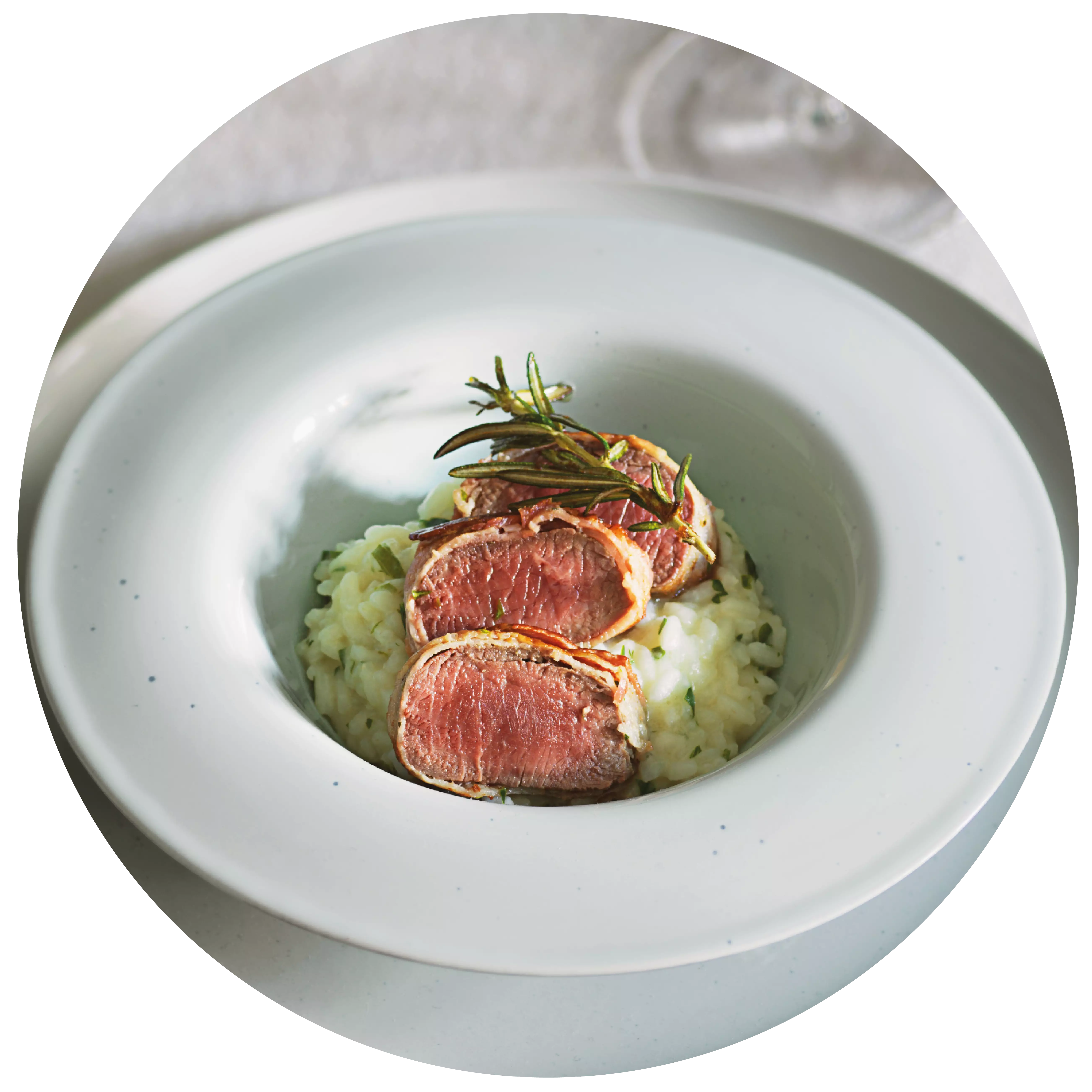
Teaser
Events
-
Show
winetasting in our winery - cheese & wine
Mainz-Hechtsheim



